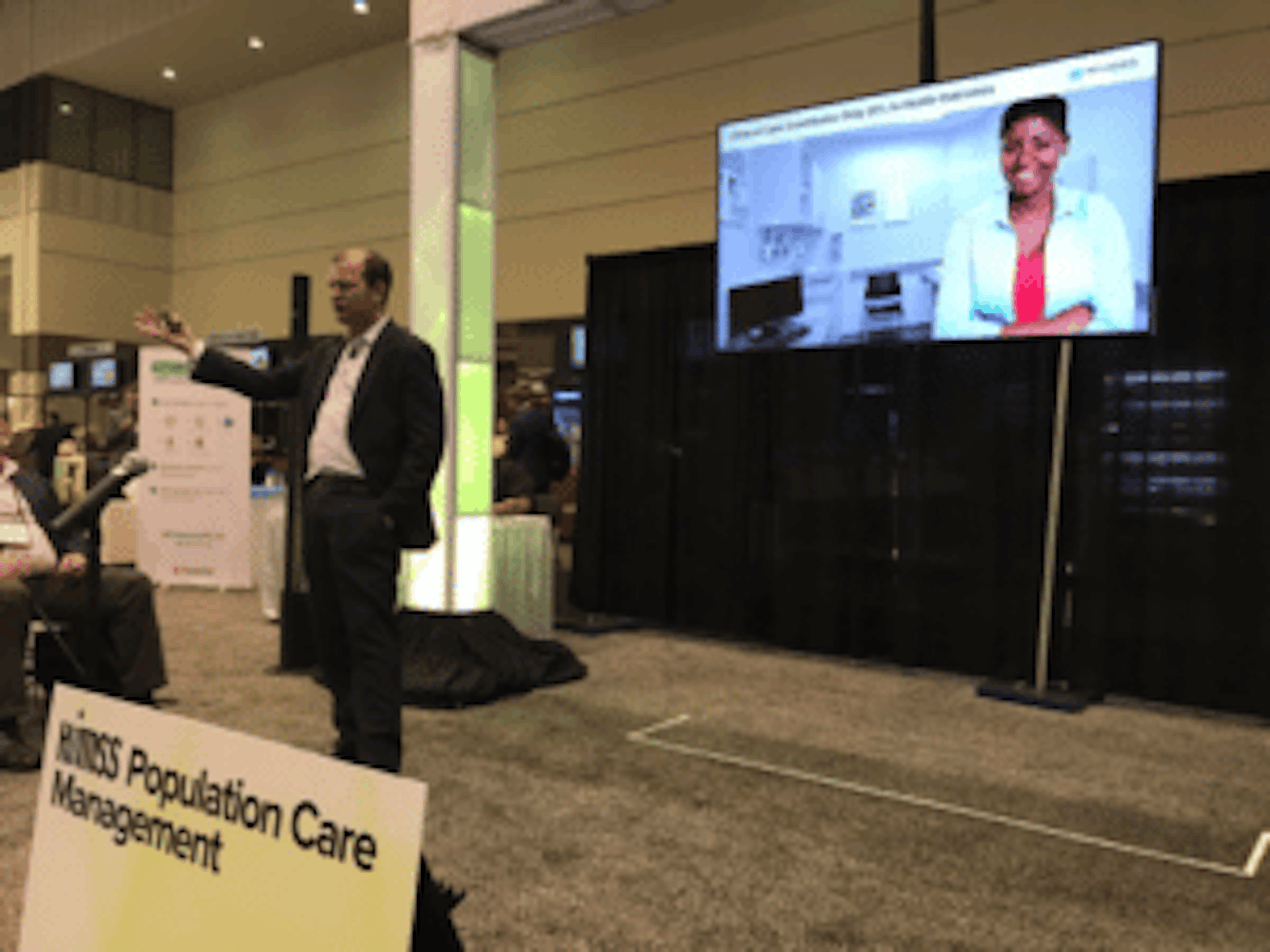

HIMSS, the annual conference that reigns supreme in the health IT industry, attracts over 40,000 health IT professionals from around the world – all of whom are interested in learning about the next big thing in healthcare technology.

I had my first experience with HIMSS back in 2014. I had just started working for ARPR and was instantly drawn to the clients in our health IT practice group. During that year and the following two, I worked feverishly to help our clients leverage their presence at the show remotely from Atlanta. This year, however, I was presented with the opportunity to travel to Orlando to help support not one, but FIVE of Alloy's health IT clients straight from
Last month, I lived and breathed health IT for three days in the Orange County Convention Center. I staffed briefings, networked, executed social media strategies, attended educational sessions and more. I was also able to absorb an immense amount of valuable information on the state of the health IT industry. So, for those of you that couldn’t attend, here are three trends that were buzzing all around the trade show.
1. The Age of Healthcare Consumerism is Upon Us (and it’s here to stay!)
Simply put, the days of the provider being in control are behind us. Rather, nine in 10 U.S. adults want to share in health decision making, and see healthcare as a consumer-driven industry. Therefore, patients expect the same consumer experiences like they receive from other industries - like banking, shopping, entertainment, travel and news – from the healthcare industry. Unfortunately, healthcare is failing compared to these other industries. Not only are consumers noticing the discrepancies, they’re becoming increasingly frustrated.
For example, in one session I attended entitled, The “P” Is For Participation, Partnering and emPowerment, speaker Jan Oldenburg shared, “If Zappos has a record of every shoe a customer has ever ordered, why can’t healthcare facilities easily provide complete documentation of a patient’s lab records?”

The key takeaway? Healthcare facilities must embrace and utilize healthcare technology outside of solely clinical settings in order to thrive. In fact, according to Jan, “If healthcare systems are not investing in technology to help them engage consumer behaviors outside the four walls of their facilities, they will NOT succeed in value-based care.”
2. Artificial Intelligence (AI) is HOT (but will require acceptance of change)
Despite the amount of health IT solutions on the market, there’s no doubt that the healthcare industry is one of the slowest to accept change.
When it comes to artificial intelligence (AI), specifically, Dr. Wen Dombrowski notes, “The promise of AI is that it will automate tasks and uncover new insights faster to improve patient experience, decrease costs and business inefficiencies. However, awareness of emerging and existing technologies is important for culture change.”
At HIMSS17, vendors stepped up to the plate to demonstrate how new technologies like AI can immensely improve the physician experience. IBM Watson outlined five guidelines for applying AI to healthcare. Google touted its advancements in smart data, digital health, APIs and machine learning, and ARPR’s client Nuance Communications revealed a study showing how clinicians can save up to 45% on documentation time and improve quality scores up to 36% using AI. AI is clearly going to be a game changer, and now is the time for investment and adoption.
Last year, my colleague, Caroline, wrote a blog highlighting the collision of healthIT and cybersecurity. In that blog, she noted that during HIMSS16 there were 12 cybersecurity related sessions. In just just one year, this increased 641% to 89 cyber-focused sessions during HIMSS17.

[One of the most intriguing sessions was Stealing Your Life featuring Frank Abagnale. (Yes, the world famous con man personified in Catch Me if You Can.) This session discussed the rising threat of identity theft through hacking medical records. To put this into perspective, healthcare is now the top industry for cyber-attacks, with over 100 million records breached in 2015 alone.
According to Abagnale, “The value of a medical record to identity thieves far surpasses that of just a name, date of birth, and social security number.” Why? He noted that it’s because these records provide an even clearer picture into an individual's life.
While investing in the right cybersecurity technology is critical to both large and small practices, Abagnale’s main takeaway was that technology alone will never be enough. Rather, due to the nature of human error, healthcare companies and facilities must educate employees on “cyber awareness” in order to truly protect themselves, their company and the millions of patients across the country.
So what comes next? Well, I know for a fact that the health IT team at ARPR will be keeping our eyes on the industry, seeing how these trends continue to evolve and grow throughout the year, and measuring the impact that they will have on our growing roster of health IT clients. Oh and, of course, we’ll already be strategizing and dreaming about HIMSS18 in Vegas.
Interested in how our team helps companies overcome the challenges and take advantage of opportunities in healthcare? Watch our Trends in Health IT Marketing Webinar here.